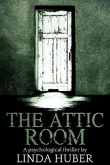
Текст книги "The Forgotten Room"
Автор книги: Lincoln Child
Жанр:
Триллеры
сообщить о нарушении
Текущая страница: 5 (всего у книги 19 страниц)
12
Beyond lay a room. As Logan played his flashlight around it, he saw it had been a laboratory of some kind. There was a single worktable, surrounded by straight-backed chairs, on which sat a few old-fashioned pieces of equipment. A much larger device – waist-high and even more mysterious in appearance – sat in the middle of the floor.
The room was not large – perhaps twenty feet square – and was constructed of the same tasteful cast as the rest of Lux. An elegant fireplace was set into one wall. A few pictures in antique frames hung here and there, but they were not like the pictures seen elsewhere in the mansion: one frame held a Rorschach inkblot; another a painting by Goya. An old-fashioned percolator sat on a corner table. A vintage phonograph stood on a stand in one corner, with a large brass amplifying horn fixed to its top and a hand crank on one side. A stack of 78s in paper sleeves was set on the floor beneath it. Beyond the worktable was a stainless-steel dolly containing a row of what appeared to be medical instruments: forceps, curettes.
In the beam of his flashlight, Logan could see a metal bar fixed to one wall, from which hung bulky suits made of some heavy metal, perhaps lead, with fanlike joints at the elbows, wrists, and knees. Their helmets had faceplates into which thin grilles had been set. The bizarre uniforms looked like alien suits of armor.
He made out, above the wainscoting near his feet, an old-fashioned electrical socket. On a whim, he pulled a circuit tester from his duffel and plugged it in. A green light came on. Odd that this room should have electrical power, when the spaces he’d just passed through did not: perhaps Strachey’s crews shut off the power only to rooms they were actively demolishing.
Except for a pile of plaster chips and pieces of lath caused by Logan’s forced entry, the room was spotless. No dust had accumulated on any of the surfaces. It was like a time capsule, hermetically sealed.
Stranger still – and Logan only now became aware of this fact – was that the room had no apparent means of entry. He shone his flashlight carefully around the walls, but could see no breaks in the polished wood to indicate a doorway of any kind.
What kind of a room was this? And what on earth had it been used for?
Logan took a step forward, then stopped abruptly. Something – some sixth sense or instinct for self-preservation – warned him that he proceeded at his peril, that there was danger here. For a moment, he stood absolutely still. And then he began backing out; but slowly, quietly, as if not to disturb some slumbering thing. He bent down slightly, feeling his way through the hole he’d created. Then – replacing the tarp over the wall as carefully as he could – he made his way stealthily back through the ruins of the West Wing, flashlight licking over the broken surfaces as he went.
13
“My God,” Olafson said. He looked around, shocked surprise distorting his patrician features.
It was the following morning. Immediately after breakfast, Logan had tracked down the director and brought him here, making the laborious journey through the West Wing’s unfinished litter of construction, down lateral corridor A, beneath the tarp, and through his rudely constructed entrance into the secret room.
“So you had no idea this place existed,” Logan said.
“No.”
“Or what it might possibly have been used for. Or why it was kept secret.”
Olafson shook his head. “If this didn’t appear to be some kind of laboratory, I’d have guessed it predated Lux’s ownership. The original builder, you know, was famously eccentric.”
Logan nodded slowly. Hard as it was to believe, it appeared that – for many decades – Lux academics and scientists had worked and studied and experimented here in the West Wing…never knowing that, all the time, a secret room had lain hidden in their midst.
“Good lord,” Olafson said, following the beam of Logan’s flashlight as it settled on the heavy, armorlike metal suits that hung from the projecting bar in one corner. “What on earth could have gone on in here?”
“You’re the director,” Logan said. “I realize there’s not much to go on. But does anything you see here suggest projects that may have been undertaken during Lux’s early years at Dark Gables?”
Olafson thought a moment. Then he shook his head. “No.” He hesitated. “I don’t see any door. How did you find this room, exactly?
“That tarp had been carefully nailed over the exposed lath, along with this.” Logan reached outside, picked up the scrawled sign that read HAZARDOUS AREA – OFF-LIMITS. “I noticed a fist-sized hole in the lath, recently plugged with plaster. It aroused my curiosity. So I investigated.”
“And you said Strachey had just sent the workmen away,” Olafson murmured. He looked around again. “Do you suppose he was the one who made that hole, discovered this room?”
“He’d be an obvious choice. But then, why seal it up again, send the workers away on a pretext?” Logan pointed to the sign. “Does this look like his handwriting?”
“Impossible to say, given the block letters.”
“Want to hear something else interesting? I tried contacting the general contractor. William Rideout, based in Westerly. All I got was an answering service. It seemed that Mr. Rideout has abruptly retired, and is currently traveling, exact location unknown.”
Olafson took this in. He seemed about to speak, but then he simply shook his head.
Logan let the sign slip to the floor. “Who here could tell me more about the West Wing?”
“Ironically, Strachey would have been your man. He’s been living and breathing the place for the last six months.” Olafson paused, as if considering something. “Look here. We’d better not tell anybody about this place – at least, not until we have a better idea of what its purpose was and why it was boarded up.”
“And I’m going to examine the original blueprints in Strachey’s office. I’d like to see how this room relates to its surroundings – and figure out if the West Wing houses any other secrets we should know about.” Logan glanced at the director. “There’s something else. At dinner the other night, Roger Carbon told me that I should be asking about ‘the others.’ ”
“The others,” Olafson repeated slowly.
“I mentioned it to Perry Maynard, but he sidestepped the question.”
A frown crossed Olafson’s face. “Carbon is a brilliant psychologist, but he can be rather a divisive influence.” He hesitated. “Before Strachey’s death, there were a few reports of…ah…rather odd incidents involving some other residents here at Lux.”
“Odd how?”
“Nothing all that alarming. Certainly nothing anywhere near what happened to Will. Hearing voices, seeing things that weren’t there.”
Nothing all that alarming. “When was this, exactly?”
Olafson thought for a moment. “A month ago, maybe. Six weeks, at most.”
“And it went on for how long?”
“A week or two.”
“How many were affected?”
“A handful. We didn’t think there was a connection. And we didn’t want you to start barking up the wrong tree.”
“Can you get me a list of names of the affected personnel?”
Olafson frowned. “Now, Jeremy, I really don’t think—”
“I can’t afford to ignore any leads. And this sounds like a lead to me.”
“But…well, I doubt those involved would want others to know.”
“Carbon knew.”
Olafson hesitated again. “And I’m sure they’d be disinclined to talk about it. It’s…I imagine it’s a little embarrassing.”
“I’ve had plenty of experience dealing with embarrassing experiences. I’ll let them know they can rely on my utmost discretion.” When Olafson didn’t reply, Logan continued. “Look, Gregory. You brought me here. You can’t ask me to open an investigation and then tie my hands.”
Olafson sighed. “Very well. But I’ll require your utmost tact. Lux’s reputation as a conservative, serious-minded institution is its most important asset.”
“So I’m told.”
“Well, then. I’ll see about furnishing you with a list.” Olafson took another look around in the reflected beam of the flashlight, disbelief once more settling over his features. Then he turned and, without another word, allowed Logan to lead the way out of the shadow-haunted chamber and back toward the tenanted regions of Lux.
14
Late that evening, Logan returned to the room. He waited until, once again, most of the activity at Lux had subsided for the night; it was highly unlikely of course that anybody else would be in the West Wing, but he didn’t want to take any chances.
He unpinned the tarp, tucked it aside, then ducked through the opening he had made previously. In one hand, he held a flashlight; in the other, a large, tungsten barn door lamp of the kind used on movie sets, which he had borrowed from a mystified Ian Albright. He placed it on its collapsible stand in one corner, then ran the cord to an outlet beneath the worktable. Returning to the lamp, he snapped it on. The space suddenly was flooded with brilliance. He wanted – needed – that brilliance for the kind of minute examination he now planned to undertake.
The danger he had sensed upon first crossing the threshold of the forgotten room had not gone away. But – under the eight hundred watts of luminescence provided by the stage lamp – it maintained its distance.
Under one arm was a set of rolled papers. Logan let his duffel slip from his shoulder, placed it on the worktable along with the flashlight, then placed the rolled papers beside them and smoothed them out. These were original blueprints of Lux, which he had appropriated from Strachey’s office that afternoon. He leafed through them until he located the plans for the West Wing. Within a small rectangular box at the bottom were the words DELAVEAUX RESIDENCE. M. FLOOD, ARCHITECT. 1886.
The oversized blue sheet was dense with lines, measurements, and tiny technical notations, but little by little he managed to decipher it. Mentally, he compared the original state of the wing with the new conception that Strachey and his workmen had been assembling. It was clear that the room he had discovered was not in the blueprints. In fact, it appeared that the space he was currently standing in had been designated, at least in part, as a stairwell. That meant one of two things – either the room had been retrofitted into the wing after the mansion’s initial construction…or the plans had been redrafted with the specific intention of hiding the room’s existence.
He rolled the blueprints up and put them aside.
Under the pitiless glare of the light, things he had not noticed before now became visible. A round disk was set flush with the ceiling, decorated with elaborate chasing – no doubt it covered the hole left by a previously installed chandelier. Had this room once been part of a larger, more elegant space? While five framed pictures remained on the walls, there were three bare spots where other objects had once hung – betrayed by the slight yellowing of the paint beneath. While he had originally believed the room to be spotless, he now made out the remains of ash in the fireplace grate.
He stepped into the middle of the room, turning his attention to the large central device. He walked around it slowly several times, examining it curiously. It was unevenly shaped, as long as a coffin and almost twice as high, with appendages of an unknown nature sprouting from its sides and its top. Each appendage was hidden beneath bulging, carefully fitted pieces of protective rosewood, fixed and locked into place like old sewing machine covers, so that it presented a uniform, monolithic surface of polished wood grain.
One end of the device was wider than the other, covered partly by a metal plate screwed onto its surface. About four feet beyond, Logan noticed that the roman numerals I through VI had been etched into the floor.
The narrower end was covered in yet another piece of wood, monolithic, edged in metal, and locked in two places to the main housing. Logan ran his fingers over one of the keyholes. As he did so, he noticed there was a small brass plaque screwed into the wood, just below the locked section. It was tarnished and age-darkened, but he could make out two words on it, one at each edge: BEAM and FIELD. There was no clue as to what these referred to.
Searching, he found two other plaques, smaller, and screwed into place near the bottom of the device. One read ROSEWELL HEAVY INDUSTRIES, PERTH AMBOY, N.J. and the other – on another section – read ELEKTROFABRIKEN KELLE AG. Plucking a digital recorder from his jacket pocket, Logan dutifully notated all this.
Putting the recorder away, he analyzed the room with both a trifield EM meter and an air-ion counter. He jotted the readings in a small leather-bound notebook for later comparison to other readings he’d taken in Strachey’s rooms and various locations around Lux.
Now he moved over to the light and switched it off. Total blackness was the result. He felt his way back to the large, mysterious machine, sat down on the floor with his back to it, cross-legged, and closed his eyes, waiting to see if the room had anything to tell him. He was curious, and a little apprehensive, as to whether there would be a repeat of the strange and sinister music he had heard in Strachey’s apartment.
At first there was nothing, save the faint awareness of lurking danger. And then, gradually, the sense of unease and disquiet he’d felt in Strachey’s rooms returned, along with a feeling of confusion. And then, quite suddenly, there it was again – the haunting, maddening passages of music, harsh and malevolent, washing over him in waves of sinister minor-key arpeggios, any sense of calm romantic beauty now utterly gone.
Logan leapt to his feet and rushed back to the light, almost knocking it over in his haste to turn it on again. And then he stood there, breathing hard, the disembodied music still echoing in his mind.
This was strange. Most strange indeed.
He walked slowly around the room, not looking at anything in particular, until his heart had slowed and his breathing had returned to normal. At last, when he felt himself again, he continued the investigation.
Above the worktable was a row of bookshelves, all empty. Beside it was a filing cabinet. Logan opened each drawer, only to find all of them empty as well.
Had this laboratory been planned and built, but then abandoned before any work had actually begun? If so, why all the apparent secrecy? On the other hand, if research of some sort had been conducted here, and then brought to a halt, why hadn’t this odd device been removed and destroyed, along with, apparently, all the books and papers?
Returning his tools to the duffel, he now removed something else: a small rubber mallet in the shape of a triangle, of the kind doctors use to test reflexes. Ear to the wall, he made a slow, careful circuit of the room, tapping the mallet against the wall every now and then, listening for the telltale echo that would betray a hollow space or a hidden door. He knew there had to be an entrance – whoever had built and worked in this place had not entered the way he had. But nothing was forthcoming. He replaced the mallet with a sigh. Had this room been entered via the floor or ceiling? No – that would have been ludicrous.
It seemed the answer would have to wait.
Now, adjusting the angle of the lamp somewhat, he began to examine the ash he’d noticed in the fireplace. It wasn’t, as he’d initially assumed, wood ash. Rather, it appeared to be the remains of carefully burned paper. Stretching out a hand, he grabbed a handful of ash and let the tiny, curled bits of blackened paper sift between his fingers. Then he raised the fingers to his nose. The charred smell was faint though detectable, but this meant nothing – the papers could have been burned the day before or five decades before.
Near the rear of the fireplace, he found a few items that were not quite as carefully burned. There were half a dozen bits of paper, each with a few decipherable letters. Most contained too few letters to be of any use – mere fragments – but as he sat down he carefully put them to one side nevertheless. Of more interest were the remains of an old photograph: perhaps one of the pictures that had been removed from the walls. While most of it had been burned away, the bottom edge still remained. He could make out a portion of a desk, apparently the worktable that still stood in this room. A few pieces of paper were visible on it, along with some journals or periodicals, all too blurry to be readable.
Behind the desk stood three people in lab coats. Only their torsos were visible; everything higher in the camera’s field of view had been burned away. Logan put this to one side, too.
The final piece of recoverable paper appeared to be a memo. It had been typed on a manual typewriter, and was obviously many decades old. It was badly burned and faded, but – taking a seat at the worktable and peering at it very closely – Logan was just able to make out one fragment: “Project Sin.”
Project Sin. The page had been burned away along the right edge, and the second word was evidently incomplete.
Or was it?
Just at that moment, Logan froze. His instincts, which he had learned to trust without question, had suddenly gone off five-alarm, dumping adrenaline into his bloodstream. What was it?
And then it came again: what sounded like the stealthy tread of a foot, the faint creak of a floorboard. It seemed to be coming from beyond the wall – the wall opposite that from which he had entered the room.
Logan stood up quickly – too quickly. The chair he’d been sitting on fell backward, crashing to the floor.
He remained utterly motionless, listening intently. For a long moment, all was silence. And then came what he thought was the soft patter of steps, quickly receding.
Grabbing his flashlight, he ducked out of the hole in the wall and hurried down the hallway, moving as quickly as he could through the confusion of deconstructed offices, abandoned equipment, and intersecting hallways, trying to make his way over to the far side of the wing. After five minutes of fruitless searching, he stopped, breathing hard. He turned off his flashlight and listened in the dark. There was no sound, no light to betray the presence of another. The West Wing appeared utterly deserted.
Turning the flashlight back on, he began making his way – more slowly now – back to the forgotten room.
15
The elevator doors whispered open onto a dimly lit basement hallway. Jeremy Logan knew that – as with several other areas of the mansion – Lux’s underground complex was strictly off-limits to visitors, day researchers, and even some part-time staff. As a result, it did not need to maintain the rococo elegance of the more public spaces. The hallway in which he found himself, for example, had walls of dressed stone and a curved ceiling faintly reminiscent of the Roman catacombs. The air was pure and chill, however, with no smell of damp or niter.
He glanced at his watch: quarter after one in the afternoon.
The discovery of the forgotten room, along with its overpowering foreignness and mystery, had affected him more than he’d initially realized. He had awoken that morning with an uncharacteristic sense of listlessness, as if he did not know what to do next or where to turn. Newport, however, was possessed of a remarkably comprehensive public library, and a visit to it after breakfast – in particular, to its microfiche and DVD collections – had dispelled his feelings of doubt. If he did not know precisely what to do next, he at least had the germ of an idea.
He’d never been in the mansion’s basement during his tenure at Lux, and there were no signs indicating which way to go, so on a whim he headed left, past the base of the mansion’s central staircase, lacking in these subterranean depths its skin of polished marble. Within a hundred feet he was brought up short by a door of gleaming steel – a remarkable anachronism in this Poe-like space – with a single thick window of tinted Plexiglas, punctuated every few inches by small round holes set into an otherwise featureless surface. A sign on the door read RESEARCH LABORATORIES: AUTHORIZED PERSONNEL ONLY. Looking through the window, Logan made out a long hallway of exceptionally modern, high-tech design, lit by recessed fluorescent panels. Closed doors with airbrushed labels lined both sides of the hallway, receding into the distance. It looked like the laboratory complex of a research hospital, save the fact that it appeared to be utterly empty.
There was a keyed panel beside the door, and a card reader, but no phone or buzzer for admittance. Somehow, knocking didn’t seem appropriate. Logan knew that Lux kept its most modern labs here in the basement – not only did this sequestration preserve the antique feel of the other floors, but the building’s status as a historic structure made it a requirement. With a shrug, he turned away from the polished door and decided to try his luck in the other direction.
This yielded better results. After passing the elevator again and following the passage around a bend, he arrived at an open door with a sign that read ARCHIVES. Beyond the door, the walls and ceiling fell away, revealing a most impressive space bathed in bright yet pleasingly mellow light. Row after row of filing cabinets ran from front to back in achingly regular lines, but they were spaced far enough apart to forestall any sense of oppressiveness. At the far end, Logan could just make out another, smaller door, with what looked like a security station beside it. He stepped inside. Decorative wooden columns carved with encircling grape vines marched in serried ranks down the walls of the room. On the ceiling was an elaborate trompe l’oeil painting of Bacchus reclining in a glade, wineskin on his lap, his tresses and limbs being caressed by what appeared to be maenads.
Just inside the door, an elderly woman was seated at an official-looking table. A nameplate on one side of the desk read J. RAMANUJAN. She ran her eyes up and down Logan, lips pursing with an expression he could not decide was appraising or disapproving.
“May I be of assistance?” she asked.
“I’m here to research some of Lux’s early files,” Logan replied.
“ID, please.”
Logan rummaged through his jacket pockets and produced the card that had been provided him during his initial processing. The woman looked at it.
“This is a temporary card,” she told him. “I’m very sorry, but temporary staff are not allowed access to the archives.”
“Yes, I know,” Logan said, half apologetically. “That’s why I was given this, as well.” And he slipped out a letter on Lux stationary. It was written by Olafson, overriding Logan’s temporary status and giving him unrestricted access.
Ms. Ramanujan read the letter over, then handed it back. “How can I help you?”
Logan slid the letter back into his jacket. “I’m not sure, exactly.”
The woman frowned in confusion. “The researchers and scientists who use the archives are always looking for something specific.” Picking up a clipboard from her desk, she turned it toward him. It contained blank document requisition forms. “Before I can be of assistance, I’ll need to know the particular project or assignment you wish to research.”
“I fear the nature of my research is rather…amorphous. Unfortunately, I can’t be more specific until I actually investigate the files.”
This was clearly outside the archivist’s purview. “If you can’t give me a project title, or even a name, perhaps you can provide a time frame? A particular month, say, during which the work took place?”
Logan nodded slowly. “That might work. We could start with the thirties.”
“The thirties?” Ms. Ramanujan repeated.
“The nineteen thirties, yes.”
The woman’s face went strangely blank. She picked up the ID card, which she’d placed on the desk, looked at it, then replaced it on the polished wood. After a moment, she looked up again. “Dr. Logan,” she said, “there are records chronicling over eleven thousand research projects here. The total number of documents attached to those projects approaches two and a half million. Do you expect me to retrieve” – she did a quick calculation – “some two hundred thousand documents for your perusal?”
“No, no,” Logan said quickly.
“Then what do you suggest?”
“If I could just do my own, ah, browsing through the stacks, it would probably give me a better indication of what I’m searching for – and perhaps very quickly, as well.”
There was a pause. “Researchers are not normally admitted to the stacks themselves,” the woman said. “Especially temporary researchers. It is most unusual.”
In response, Logan let Olafson’s letter peep out again from his jacket pocket.
The archivist sighed. “Very well. You may use that table over there, if you need to. But take no more than five folders from the stacks at a time. And please be careful when you refile them.”
“I will,” Logan assured her. “Thank you.”
Over the next three hours, Logan – under the watchful gaze of the archivist – moved back and forth between the stacks and the research table, thick folders in hand each time. He opened the folders and scanned them quickly, scribbling observations into a small notebook with a gold pen. At first, his investigations took him all over the large room. But later, he narrowed his concentration to a much smaller area. Now his examination of the folders became more studious, his reading slower. At last he put the final set of folders away, and – instead of doing additional reading – moved from stack to stack, gazing into various drawers, all the time making notations in his journal as if tallying something. Finally, he put the notebook away and returned to the archivist.
“Thank you,” he said.
Ms. Ramanujan inclined her head as she returned his ID card.
“I have a question. Extensive as these files are, there doesn’t seem to be anything more recent than 2000.”
“That is correct. These archives contain only files of closed or inactive research.”
“Then where is the more recent documentation kept?”
“Some of it, of course, is kept with the scientists doing the research. The rest is in archive two, beyond that door.” And she pointed toward the far end of the room.
“I see. Thank you again.” And Logan turned away, heading in the indicated direction.
“Wait—” the woman began. But Logan was already moving quickly toward the back of the room, his footsteps echoing on the marble floor.
At the back of the vast space – as he’d noticed upon first entering – was a security station, blocking the door beyond. A lone man in the garb of Lux’s security staff sat at a desk within it. He stood up as Logan approached.
“May I help you?” he asked.
“I’d like to examine the recent archives,” Logan said, nodding toward the door.
“Your ID, please,” the guard said.
To save time, Logan presented not only the ID but the letter from Olafson as well.
The guard examined them, then handed them back. “I’m sorry, sir, but you have insufficient privileges to access archive two.”
“But this letter from Dr. Olafson—”
“I’m sorry, sir,” the guard repeated in a firmer tone, “but only persons with a level-A access or greater are permitted past this door.”
Level A? Logan had never heard of such a thing. In fact, during his time at Lux, he hadn’t been aware of any access levels at all. “But—” he began, taking a step forward.
In response, the guard moved to block his progress. As he did so, Logan caught sight of a nightstick and a can of Mace snugged into the man’s heavy service belt.
“I see,” Logan said slowly. Then he nodded, turned, and made his way back through the stacks and into the basement corridor beyond.








